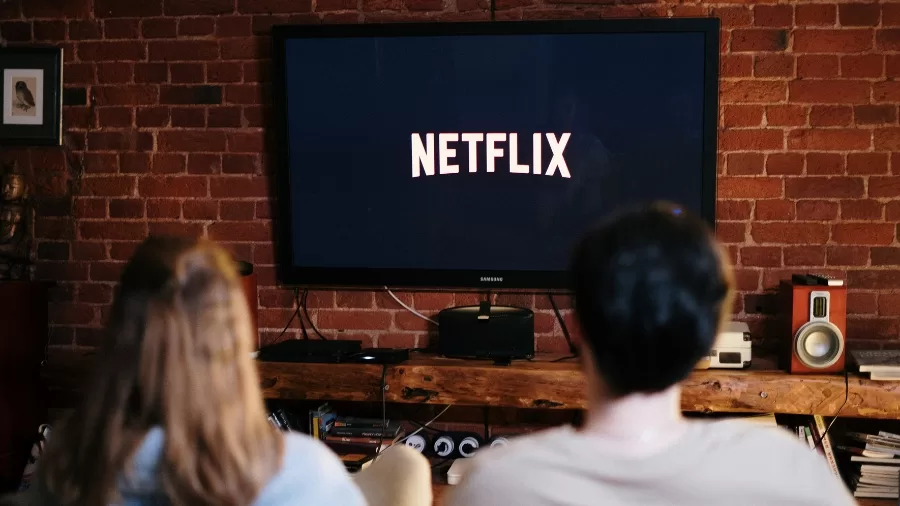Entertainment
The Race to a Trillion: How Netflix Plans to Outpace Everyone in Global Streaming

- Netflix aims to double its revenue from $35 billion to $70 billion by 2030 to reach a $1 trillion market cap.
- The ad-supported tier has surpassed 40 million global users just one year after launch.
- Over 50% of Netflix’s viewing now comes from non-English content, highlighting its global localisation strategy.
Setting the Stage: Netflix’s Billion-Dollar Pivot
Covering Netflix used to be straightforward. New series. Cancelled series. Maybe a price bump.
Not anymore.
At a recent investor presentation, Netflix did more than share financial results. It laid out a plan to double its revenue and reach a $1 trillion market cap by 2030. A target that would place it among the world’s most valuable companies.
Current valuation? Around $270 billion.
What’s driving the shift? Streaming alone isn’t enough.
Netflix is retooling itself into a global entertainment and tech hybrid—one that plays in advertising, gaming, AI, and original content across more than 190 countries.
Let’s break down what that means for the industry—and you.
The Ad Play: From Passive to Powered
Netflix launched its ad-supported tier in late 2022. At the time, some saw it as a catch-up move.
In just 12 months, the ad tier has grown from 5 million to 40 million monthly users.
The company has now confirmed it’s building its in-house advertising platform, expected to launch globally by late 2025.
For the entertainment business, that’s a serious move. It means Netflix:
- Won’t rely on third-party ad tech vendors
- Will own its targeting and measurement systems
- Can offer brands direct access to global streaming audiences
Ad inventory on Netflix will be more customisable. Think bespoke campaigns. Category exclusivity. Even interactive formats.
Brands in retail, fashion, and gaming should already be exploring partnerships.
Original Content: Local Focus, Global Scale
Netflix continues to scale its global content portfolio.
In 2025 alone, major releases include:
- The final season of “Stranger Things” (Nov 27)
- “Squid Game” Season 3 (June 27)
- “Fear Street: Prom Queen” (May 23)
- “F1: The Academy” docuseries (May 28)
But the real growth is in local productions.
Korean dramas, Spanish thrillers, and Indian crime series are pulling international audiences. Netflix’s strategy is to invest heavily in non-English content that can travel well.
For creators, this opens the door to global reach from local projects.
For advertisers, product placements must now factor in cultural relevance, not just language.
UK Still Counts—Big Time
Netflix has over 17 million UK subscribers. It’s the most-watched streamer in the country.
Production partnerships are growing, too. Netflix now calls Shepperton Studios its UK hub. British shows like “The Crown”, “Sex Education”, and “Top Boy” have had a global impact.
The UK’s new regulations on content quotas and ad transparency will shape how Netflix operates here.
That means brands and producers in the UK should view Netflix as both a platform and a partner.
Gaming Isn’t a Side Project
There are now more than 80 Netflix-branded games in development.
Some are extensions of hit shows. Others are originals. All are part of a strategy to expand user engagement beyond video content.
Think of gaming as Netflix’s second screen—not just a separate product, but part of the ecosystem.
Mobile titles are already included in subscriptions. Console and PC games are expected to roll out by 2026.
For entertainment companies and IP owners, this means licensing opportunities and co-development deals.
What Netflix Is Doing With AI
AI will shape Netflix in multiple ways:
- Faster translation and dubbing across languages
- Personalised trailers based on viewing habits
- Smart scheduling and production planning
Netflix has already started experimenting with generative AI tools for internal use, particularly in post-production and voice work.
This could help reduce time-to-market and streamline localisation. It also raises questions for unions and creatives—debates already surfacing in Hollywood.
Global Reach, Local Relevance
Netflix is in 190+ countries. To keep growing, it needs to:
- Win in emerging markets like Southeast Asia and Africa
- Maintain dominance in mature markets like the UK and the US
- Keep costs manageable while scaling content production
One way it’s managing this is through licensing and co-productions.
Partnering with local studios lets Netflix scale output without absorbing full production costs.
This is important in markets where subscription ARPU (average revenue per user) is lower, but content demand is growing fast.
Netflix by the Numbers
Here’s what the scale looks like right now:
- ~260 million subscribers globally (2024)
- ~$35 billion in annual revenue
- Over 40 million ad-supported users
- More than 50% of the content watched is non-English
- Top market outside the US: UK
To reach $1 trillion, Netflix needs to push revenue above $70 billion annually. That means:
- More subscribers
- Higher ad revenue
- New monetisation models (e.g. gaming, licensing)
What You Should Be Watching
Whether you’re in entertainment, tech, or branding, Netflix is a bellwether.
Here’s what to pay attention to between now and 2030:
- Ad platform rollout and its targeting capabilities
- Expansion of global content creation hubs
- Gaming and interactive content development
- International subscriber growth by region
- Impact of AI tools on production and personalisation
If your business touches media, you’ll likely interact with Netflix directly or indirectly.
Final Word: The Platform Future
Netflix is no longer a streaming service. It’s becoming a vertically integrated platform.
It produces, distributes, advertises, gamifies, and localises—all in-house.
If it gets this right, $1 trillion may not just be a target—it could be a checkpoint.
Everyone in the content economy should take note.



















































